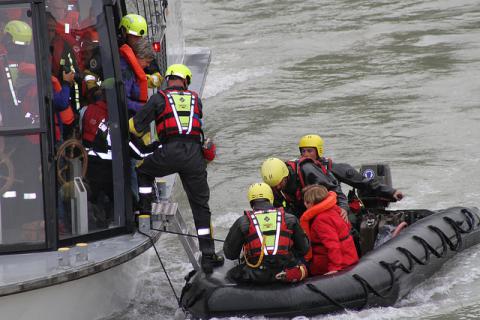
Current climate variability already leads to high economic costs in Europe, including from major floods. Climate change is likely to increase these extremes, even in the short‐medium term. As these will be amongst the highest near‐term economic costs, managing these risks is an early priority for adaptation.
This case study compares options for adapting and improving disaster risk reduction for near future, but uncertain, changes due to extreme weather events resulting from climate change.
Specifically the following research questions are asked:
- Given that there is interference with an extreme event baseline and many benefits are difficult to quantify, how can we make an economic case for adaptation to extreme events?
- How do we project insights from current disaster risk management practice forward to future adaptation to extremes?
- How does iterative risk management play out in practice?
- What are the fiscal risks imposed by extreme events modified by climate change?
Objectives
- Develop an improved protocol for comparative economic analysis of options for adapting and improving disaster risk management (DRM) to near future changes in extreme weather events.
- Identify the potential scale of public finance resource commitments for improved disaster risk management under climate change in the EU.
- Develop rules for transferability of the case study results to general guidance for the economic assessment of adaptation.
Outputs
A key output from this case study will be the development of an inventory of implemented DRM investments in the EU. Looking at economic appraisal for a range of options at a range of government scales, from community to national and EU wide levels, the study will draw out conclusions based on the current scope for appraisal and information requirements for disaster risk management in the EU.
The study uses the IIASA CATSIM model to produce a pan-European analysis of fiscal disaster risk and related DRM decisions as a response to future flood and drought risk. Using this information the study identifies risks and their potential repercussions and identifies possible options for better planning in order to reduce fiscal risks.
Outputs will include a new methodology for stochastic extreme event planning and insights into the scale and scope of fiscal disaster risk modified by climate change.
Deliverables
D5.1) Report: Assessing the economic case for adaptation to extreme events at different scales: Development of guidance for the economic analysis of extreme weather events will be reported. (Month 24)
D5.2) Report: Pan-European Modelling of economic decisions related to disaster risk management in light of climate change: Economic protocols will be applied to modelled extreme weather events at the European scale. (Month 30)
D5.3) Report: Policy recommendations, lessons learned and guidance: The fiscal consequences of extreme weather events, and the implications of these for public policy in Europe will be evaluated and reported. (Month 36)
